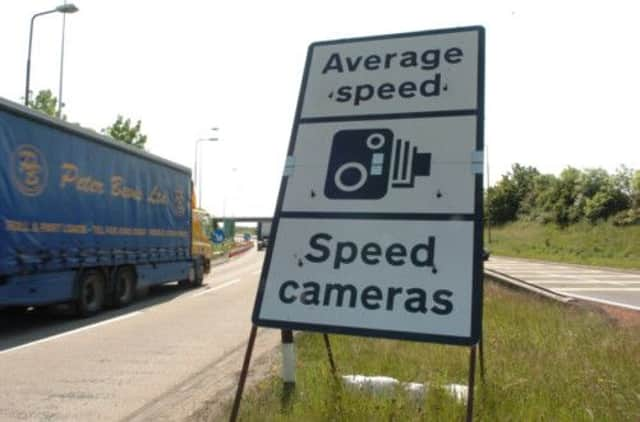Row over speed camera figures


The UK Statistics Authority (the UKSA) said the Scottish Government-produced document gave the impression that it was not “impartial” and could be interpreted as an endorsement of the camera programme’s policy.
The introduction of safety cameras on Scotland’s roads has been controversial and unpopular because of widespread scepticism about whether they cut accidents and save lives. One UK-wide survey last year found nearly half of respondents thought their main purpose was to raise money.
Advertisement
Hide AdAdvertisement
Hide AdThe report has been published by Transport Scotland on the effectiveness of the Scottish Safety Camera Programme, which runs 400 speed and traffic light camera sites on roads around the country.
But the UKSA said the report appeared to makes the case that cameras were cutting crashes by presenting this objective beside figures showing there had been a reduction in incidents.
“Users [anyone reading report] could interpret [this] as an endorsement of the programme’s policy,” it stated.
“A key use of the statistics is to measure the programme’s progress against its stated objectives.
“However, “the presentation of the objectives of the programme... might lead some users to perceive the report as being politically driven, rather than impartial.”
The number of drivers caught by cameras – some of which are on fixed poles and some mobile – peaked at 200,000 in 2004-05, and has since fallen every year down to 90,000 in 2010-11.
Total fixed penalty fines paid, which go to the UK Treasury, fell over that period from some £8.7m to £3.7m, leading to calls for their numbers to be reduced.
The Transport Scotland report said the number of people killed or seriously injured at camera sites was “68 per cent lower after camera enforcement”, and the number of incidents involving injuries was down by 48 per cent.
Advertisement
Hide AdAdvertisement
Hide AdBut the UKSA said: “The report does not provide any contextual information such as the number of road accidents or casualties across Scotland, time series or the development of other safety measures which could impact upon the numbers and types of road traffic incidents.”
Motoring groups said speed cameras worked and were supported by most drivers, but official reports about their operation must tell the full story.
Professor Stephen Glaister, director of the RAC Foundation, said: “According to the old saying, there are lies, damn lies, and statistics. Interpreting speed camera and casualty data is not for the faint-hearted and requires special analytical skills.
“This report does not say speed cameras don’t work – indeed our own work suggests they do – but Scottish drivers have a right to expect official pronouncements to be either watertight or couched with the appropriate caveats. In this case both seem to have been absent.”
Claire Armstrong, co-founder of anti-camera campaigners Safe Speed, said: “The assessment team have quite correctly condemned these statistics and so do we unreservedly. There is no quick route to road safety and automated speed camera enforcement is a flawed policy that must be eradicated from our roads.”
A Transport Scotland spokesman said: “The Scottish Government is continuously making improvements to the statistics it produces, including looking at ways of improving the way we collect and analyse the data from camera sites used to monitor accident levels and changes in speed, which in turn informs road safety policy in relation to the use of safety cameras.
“The Scottish Government commissioned a review by specialist academics of the methods used in the Key Scottish Safety Camera Programme Statistics, looking at the existing methodologies and any further improvements that could be made. We also approached the UKSA to have our statistics assessed for National Statistics designation.”